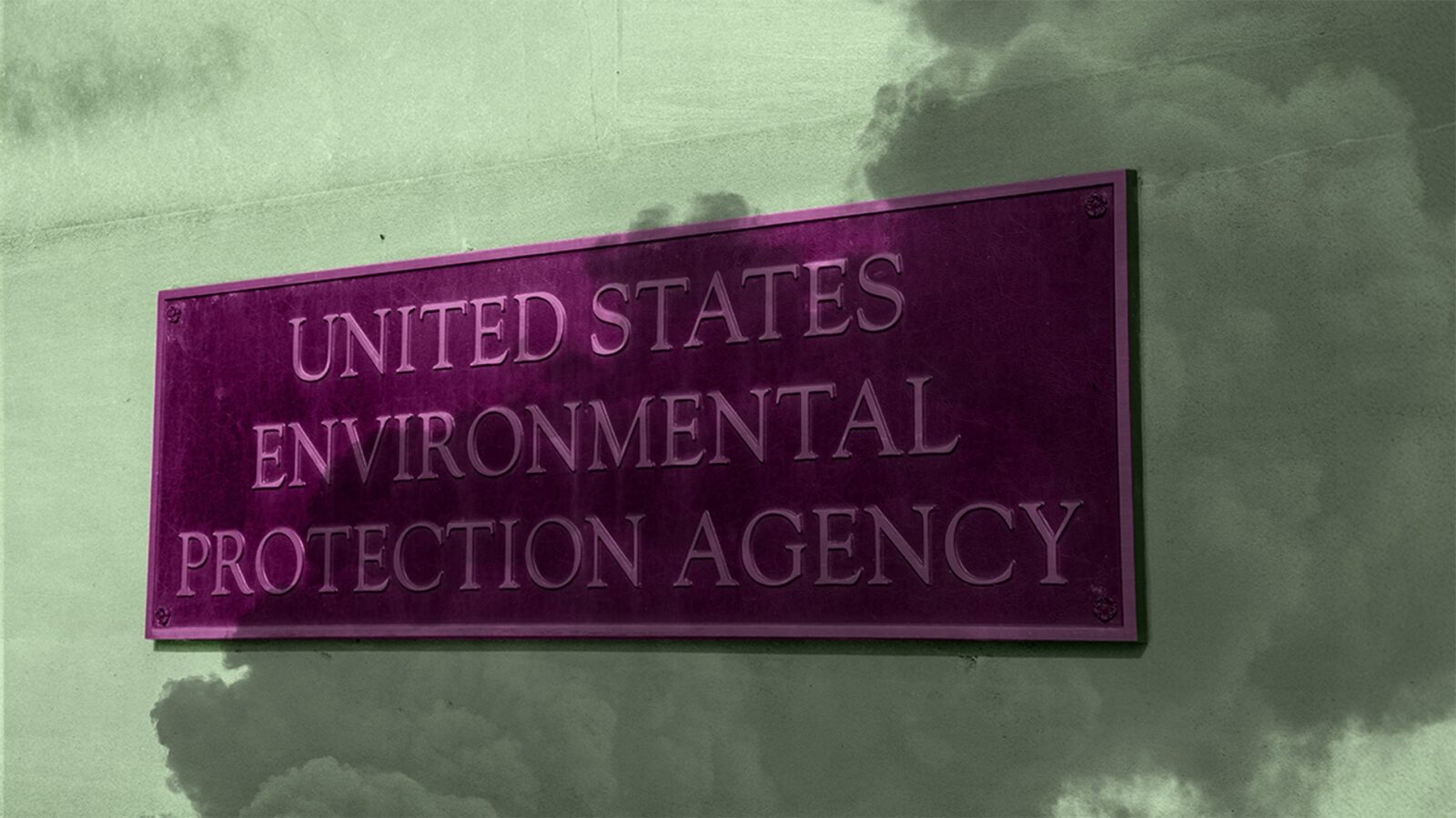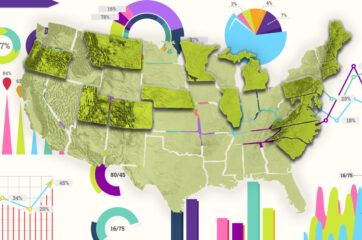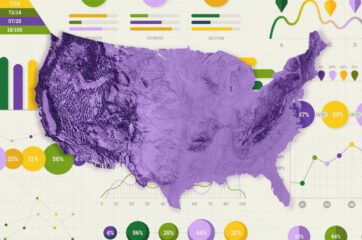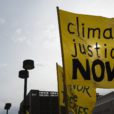Author
Jordan Gerow ǀ Policy & Research Director
Research Support
Ruby Wincele ǀ Policy & Research Manager
Jacqueline Adams ǀ Senior Policy & Research Associate
Editors
Amanda Pontillo ǀ Communications Director & Operations Lead
Greg Casto | Communications Manager
On March 12, the Environmental Protection Agency (EPA) announced a list of agency actions and regulations under reconsideration, amounting to a sweeping change in how the agency regulates electric power, oil and gas production, vehicles, water and air quality, and climate pollutants from all sources. The magnitude of these regulatory changes remains to be seen — most will require drafting new proposed rules, following a notice and comment period, ultimately adopting new regulations over the course of what is likely to be years, and then defending them in court. However, the types of changes the agency is considering suggest that it intends to end the regulation of climate pollutants to the maximum extent possible.
In this article, we explain the EPA’s actions, including what this means for states and how state actors can fill the gap left by the EPA’s changing direction.
Endangerment Finding
The highest-profile action announced by the EPA was to reconsider the 2009 Greenhouse Gas (GHG) endangerment finding. Under the Clean Air Act, the EPA is required to consider whether different types of pollutants can endanger public health or welfare. If the agency finds that a pollutant meets that standard, it is required under the Clean Air Act to promulgate emissions regulations for that pollutant. This endangerment finding therefore is the basis for all of the EPA’s GHG regulations.
To reverse this finding would require the EPA to convince federal judges that an overwhelming body of scientific evidence from decades of climate change research is wrong. It is an unlikely path to deregulation, but would have a high impact if it were successful. Because the endangerment finding underpins most climate rules, rewriting the scientific finding could streamline the process of undoing those rules for power plants, cars, and other sectors. Instead of writing a replacement rule, the EPA could merely roll many of those rules back.
It is unclear at this time whether the EPA intends to propose revisions or repeals to each of its GHG regulations below at the same time as it reconsiders the 2009 GHG endangerment finding itself.
Social Cost of Carbon
Another overarching regulatory tool that the EPA has targeted is the social cost of carbon, which acts as a measure of the damages from climate pollution in order to inform regulatory cost-benefit analyses. The “Unleashing American Energy” Executive Order, issued in January, directed the EPA to consider “eliminating the ‘social cost of carbon’ calculation from any Federal permitting or regulatory decision” within 60 days.
In the EPA’s announcement last week, the agency stated that it is “revisiting” the social cost of carbon, without confirming that it would eliminate use of the tool. Many forms of required regulatory cost-benefit analysis may demand some assessment of the cost of GHG emissions, putting the agency’s decisions in legal peril if they don’t at least attempt to measure these costs. In the first Trump administration, the social cost of carbon was not ultimately eliminated, but its use was suspended until the agency arrived at a dramatically lowered figure.
What States Can Do: States may incorporate the EPA’s social cost of carbon into their own regulatory analyses, even when the federal government suspends its use. States can also adopt their own assessments. New York performed its own SCC estimate in 2020, which Vermont subsequently adopted.
Clean Power Plan 2.0
The EPA announced it would be reconsidering the Biden administration’s rules on GHG emissions from coal and natural-gas fired facilities. The Biden administration rules set emissions guidelines for coal plants based on their expected year of retirement, with the longest-lived plants (expected in operation after 2039) required to reduce emissions by 90 percent, largely through carbon capture and storage, by 2032.
For natural gas plants, different emissions levels were established for plants operating at varying percentages of the year. Peaker plants, which only operate less than 20 percent of the year, are subject to cleaner fuel requirements, while baseload plants, which operate over 40 percent of the year, were similarly required to reduce their GHG emissions by 90 percent by 2032. It was widely expected that these requirements might spur early retirements of the dirtiest plants.
In the first Trump administration, the EPA proposed climate pollutant rules for coal and natural gas fired facilities that walked back some of the more stringent requirements put in place during the Obama administration. That regulation, known as the Affordable Clean Energy Rule, required only small heat rate improvements at these facilities, and was accordingly struck down by the D.C. Court of Appeals for insufficient stringency. That rulemaking may foreshadow the approach that the EPA will take again.
What States Can Do: Regardless of EPA’s regulations, states remain free to impose their own GHG-emissions limitations on power plants, or the electric sector at large, whether through their State Implementation Plans under the Clean Air Act, or indirectly via carbon pricing mechanisms such as the Regional Greenhouse Gas Initiative (RGGI) or various cap-and-trade/invest approaches, or through renewable portfolio standards.
Vehicle Emissions Rules
The EPA announced that it will revisit Biden administration rules, finalized in 2024, providing technology-neutral, performance-based standards for cars, SUVs, light pickup trucks, and medium-duty large pickups and vans for model years 2027-2032. The rules had been projected to save 7.2 billion metric tons of CO2 over the life of the program.
The waivers that the EPA has granted for California to set its own more stringent emissions targets for cars and trucks were not included in this announcement. Those waivers are being challenged separately, via directives in the “Unleashing American Energy” Executive Order, as well as under the Congressional Review Act.
What States Can Do: First, while California’s waivers stand, states remain free to opt into California’s Advanced Clean Cars and Advanced Clean Trucks rules, which represent a higher standard than the federal baseline. Attempts to withdraw these waivers during the first Trump administration were never legally resolved, and considerable doubt hangs over those efforts today. If those waivers are rescinded, states would be federally preempted from directly regulating emissions from vehicles. Even in that case, states have many levers to encourage the transition to electric vehicles generally. This includes tax and rebate incentives for both vehicles and charging infrastructure, EV-charging rate design, Public Utility Commission proceedings to empower utilities to build out the charging network, streamlining charger permitting processes, EV-ready building and zoning codes, and EV procurement targets for government and transit organizations. If the EPA backslides on these specific rules, states will have ample opportunity to help fill the gap in the transportation sector.
Oil and Gas Sector Methane Regulations
The EPA announced it would reconsider a 2023 methane emissions regulation at oil and gas extraction operations. Methane is a significant contributor to climate change, with recent estimates of its impact on current levels of warming reaching as high as 30 percent. One of the largest sources of methane are fugitive emissions from oil and natural gas extraction sites, which is itself responsible for an estimated 30 percent of U.S. methane emissions. Operators often “flare” (openly burn) or let methane leak instead of capturing and controlling it.
In the face of rising scientific understanding of oil and gas sector methane emissions, the Biden-era EPA adopted the first set of federal methane requirements on oil and gas sites, cracking down on flaring, pipeline leaks, and inefficient equipment. The rule avoids an estimated 58 million tons of methane emissions from 2024 to 2038, the equivalent of 1.5 billion tons of carbon dioxide – reducing methane emissions from regulated sources by nearly 80 percent relative to what they would be without the rule.
What States Can Do: States remain free to set their own emissions regulations on oil and gas production sites, as we cover in our State Climate Policy Dashboard.
Technology Transition Rule for Hydrofluorocarbons
The EPA will revisit rules establishing limits on the use of climate-damaging hydrofluorocarbons (HFCs) in specific technology sectors and subsectors, such as foam, aerosols, and refrigeration, air conditioning, and heat pumps. HFCs are greenhouse gases with global warming potentials (GWPs) that can be hundreds to thousands of times more potent than carbon dioxide. The total phaseout of HFCs globally could prevent 0.5°C of warming by 2100.
This rule, unlike most other climate rules targeted by the EPA, is not susceptible to rollback if the GHG endangerment finding were reversed, as it springs from a separate law, the 2020 American Innovation in Manufacturing (AIM) Act. That Act does require the EPA Administrator to promulgate a final rule phasing down the use of HFCs, so the EPA will have to issue a revised rule implementing the statute.
What States Can Do: States have the power to regulate HFCs as well, by meeting or exceeding regulations established under the EPA’s SNAP program, incentivizing sustainable alternatives to HFCs, regulating the management, recycling, and disposal of HFCs, and by setting procurement targets for state agencies.
Regulation of Other Pollutants/Co-pollutants
A number of regulations to be revisited do not directly address climate pollutants, but invoke common co-pollutants from the same emissions sources. From a climate perspective, these regulations can provide another source of pressure to reduce emissions from these sources. Regulations that the EPA intends to revisit include:
- Good Neighbor Plan: The EPA announced it would be ending the “Good Neighbor” Plan, which targeted ozone-forming nitrogen oxide (NOx) emissions from power plants and certain industrial facilities in upwind states. The plan was designed to ensure that 23 states reduce pollution that significantly contributes to problems attaining and maintaining the EPA’s health-based air quality standards for ground-level ozone in downwind states. The Good Neighbor Plan’s terms had been stayed since a June 2024 SCOTUS Order.
- Mercury and Air Toxics Standards for Coal Fired Plants: The EPA noted it would revisit these standards, which reduce emissions of mercury and non-mercury metal hazardous air pollutants, such as nickel, arsenic, and lead. These rules were finalized in 2024, updating rules that were previously adopted in 2012. In the first Trump administration, the EPA weakened these rules, which may offer a preview of the approach the agency will be taking in the months ahead. As a stationary source of air pollution, states are not preempted from regulating these coal plants themselves. Massachusetts provided early leadership in this space.
- Particulate Matter Regulations: In 2024, the EPA set the level of the primary (health-based) annual PM2.5 standard at 9.0 micrograms per cubic meter, which would avoid an estimated 4,500 premature deaths, 800,000 cases of asthma symptoms, and 290,000 lost workdays by 2032. This standard informs the conditions of permits issued under the Clean Air Act and the State Implementation Plans that govern them.
- Coal Wastewater Standards: A 2024 final regulation set limits on discharge standards for four different types of wastewater generated at coal facilities. The agency estimated in 2024 that water quality and non-water quality improvements in this rule will provide $3.2 billion in public health benefits each year, disproportionately benefiting low-income communities and communities of color, at a cost of less than $3.50 per year for the average residential household. The agency will revisit these standards.
- Wastewater Regulations for Oil and Gas Extraction: The EPA will revisit Subpart E of the current Oil and Gas Extraction Effluent Guidelines at Title 40 Part F of the Code of Federal Regulations, which have been in place since 1979. Their stated aim will be to provide for beneficial reuse of wastewater in applications ranging from datacenter cooling to fire control.
- Hazardous Air Pollution Standards: The EPA will revisit stationary source standards for pollutants that are known or suspected to cause cancer or other serious health effects. Specifically, the EPA is initially reconsidering NESHAPs for integrated iron and steel manufacturing, rubber tire manufacturing, synthetic organic chemical manufacturing industry, commercial sterilizers for medical devices and spices, lime manufacturing, coke ovens, copper smelting, and taconite ore processing.
- Regional Haze Program: The Regional Haze Program, established in 1999, coordinates between state and federal agencies to reduce haze in 156 different national parks and monuments, including Yosemite and the Grand Canyon. It impacts emission regulations from power plants, including particulate matter, nitrogen oxides, sulfur dioxide, and volatile organic compounds.
- Coal Ash Rules: The EPA will reconsider coal ash regulations under the Coal Combustion Residuals from Electric Utilities final rule, established in 2014, which protect groundwater sources from leaching of toxic coal ash.
Other Actions and Rules Under Reconsideration
The following actions or rules do not directly control emissions, but may have significant climate and health impacts:
- The Environmental Justice and Diversity, Equity, and Inclusion arms of the EPA will be eliminated. Staff in those departments have been on administrative leave since the promulgation of a DEI-related Executive Order issued in January. States can fill the gap EPA is leaving by appointing their own EJ Advisory Bodies, Community Investment Requirements, or establishing state-level EJ offices and staff.
- Reconsideration of the Greenhouse Gas Reporting Program, which provides significant visibility into approximately 8,000 large GHG emission sources, fuel and industrial gas suppliers, and CO2 injection sites in the United States.
- Reconsideration of the Risk Management Program Rule, which requires facilities that use extremely hazardous substances to develop a Risk Management Plan.
- Reconsideration of the National Enforcement and Compliance Initiatives, a body of guidance that directs agency resources towards the most pressing environmental challenges, which, under the Biden administration, included mitigating climate change and addressing pollution in overburdened communities.
- Reconsideration of how “Exceptional Events,” like wildfires, are excluded or accounted for in air quality monitoring for purposes of meeting federal standards.
- Accelerating efforts to clear the backlog of State Implementation Plans under the Clean Air Act.
- Reconstituting the Clean Air Scientific Advisory Committee (CASAC) and Science Advisory Board (SAB). All members of these bodies were removed from their posts in January. These bodies were established in the late 1970s to provide expert guidance to EPA. Their constitution was disputed four years ago as well, when the Biden administration countered a number of reforms that had taken place during the first Trump Administration.
- Extension of “no action” assurance for North Carolina, exempting the state from obtaining Title V permits under the Clean Air Act, as the state continues to burn through debris in the aftermath of Hurricane Helene.









